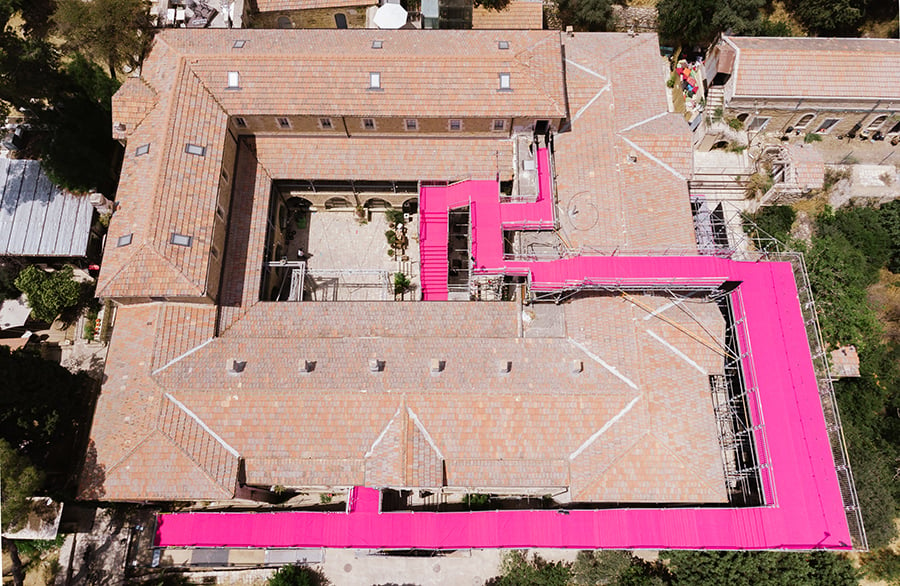
July 12, 2019
7 Highlights From Jerusalem Design Week That Asked: East of What?
The design week’s eighth edition unpacked the politically fraught notion of “EAST” at the historic Hansen House.

“The joke is that we’re ten years behind in fashion and ten years ahead in conflict, so this is the material that we’re working with,” says Tal Erez, chief curator of Jerusalem Design Week, who, with artistic director Anat Safran, recently concluded the eighth iteration under the bold and politically loaded theme of EAST. At its core, the theme asked and challenged: For whom and what is half of the world considered East? Through exhibitions, performances, workshops, and talks, the program sought to not only address divisions between West and East Jerusalem, but also notions of regional identity within the Middle East as well as the “Far East” at large. “Our tendency is to look at the East from a removed folklorist perspective,” as Erez says, referencing clichés of Zen, yoga, and Orientalism, “but the East does not exist, because the world is round.”
The week-long event, held late last month at the landmark Hansen House, brought together a global set of designers, graduates, and curators from Israel, Palestine, China, Japan, Turkey, India, Belgium, the Netherlands, Romania, and more, showcasing more than 100 projects in all. Staged as a building-wide takeover, with select installations held off-site throughout the city, the festival’s purview was decidedly non-Eurocentric, and—in contrast to more established fairs in an increasingly jam-packed calendar of global design weeks—was rooted chiefly in a non-commercial inquiry.
In contrast to well-trodden design destinations such as Milan or New York, “We don’t have a history of industry or craft, or a long cultural history of design,” says Erez, who describes Jerusalem as a “petri dish” rife with social, political, and religious struggles. Here we share a few highlights that shed light on this year’s curatorial theme.
You may also enjoy “Design Cities 2019: Tulsa, Oklahoma.”
Would you like to comment on this article? Send your thoughts to: [email protected]
Recent Viewpoints
Viewpoints
Navigating the Path to Net Zero




















